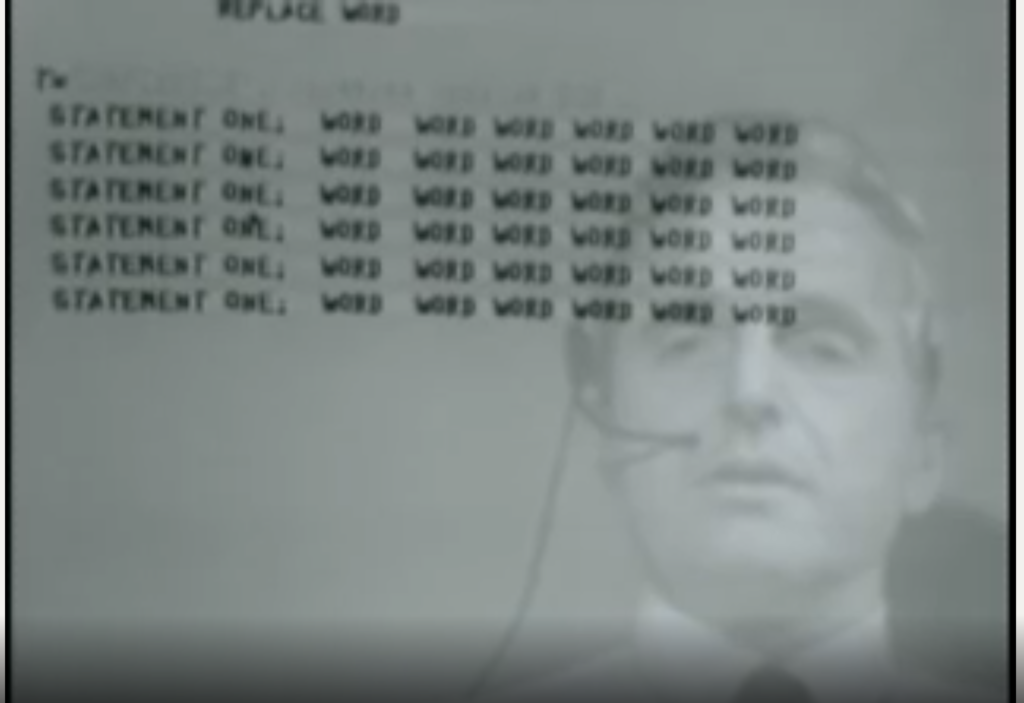When watching Douglass Englebart’s demo of a computer and mouse prototype, I found myself having to remind myself of what time in technological history this device was produced due to how similar and yet vastly different it is from what we know today. It is easy to look at its massive size and simple interface to judge how far technology as progressed, but watching Englebart engage with the device and recover from mistakes sparked new connections between where the computer started, and where it is now.

Beginning with the interface, its stark white background and black typeface is almost reminiscent of that of Notion. Although I do not have the opportunity to engage with the prototype myself, in watching Englebart manually input text and organize according to his own conceptual model, I was reminded of my own experience staring at a blank, white screen with nearly no idea where to begin. The prototype seems to be primarily controlled by the physical keyboard, which may be utilized to type commands for the computer to execute. This is similar to the manner in which a programmer would work, but vastly different from how we interact with technology today. Namely, that rather than manually type commands as a means of “communicating” our needs to the computer, we have the ease of clicking a button (often brightly formatted, for hierarchy) that is pre-programmed with a distinct function.
It is most interesting to note that he begins his demo with the example of writing a shopping list, a task that is commonly executed physically with pen and paper, but that I often do day-to-day in the Notes application on my phone. From this list, he establishes an information architecture by formulating hierarchical lists, similarly to how we maneuver information in the current field of Interaction Design. By creating collapsible lists and revealing only what is relevant to the user at any given time, he reduces cognitive load, a task we often strive to succeed in today. However, as soon as a mistake is made, a screen flashes the words “ILLEGAL ENTITY” to notify him that a mistake has been made. Although the single phrase on a white background is sure to capture the user’s attention through feedback, it does not provide adequate information as to where the mistake occured and how to resolve it, requiring the user to think back to the last item he or she engaged with.
Lastly, and most laughably, Englbartt comments on the naming of “the mouse” which he jokes is something he never understood, but that has never changed. Despite its use of two wheels to track user’s movements, the mouse is a key example of how much technology can evolve through the years, and yet, some things just stick.

Douglas Englebartt has indeed brought a huge change to the conversion of human beings from paper and pen to computer. I have the same feelings as you. If we were on the scene at that time, we would not have been able to imagine that this huge machine would develop into a must-have that humans cannot leave.